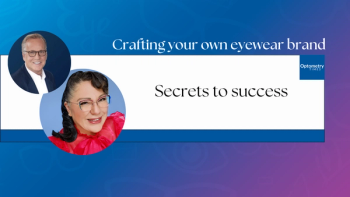
Eyeglasses target myopia prevention with artificial light
The amount of light effused by these round-shaped eyeglass frames are designed to match the exact wavelength of sunlight a user would be exposed to outside.
With approximately 50% of the world’s population expected to develop myopia by 2050,1 clinical and technological advancements are being made to combat this growing eye health concern.
One latest advancement is a pair of eyeglasses that aims to solve myopia through the use of artificial light.
This wearable technology was developed by
The company and its myopia-preventing glasses were
The minimal round eyewear-designed glasses work by using a photoluminescent substance—“light rings”—implanted in the edge of the eyewear frame to transmit 480 nm of spectrum light to the eye.
This then activates retinal dopamine release, creating a positive effect on reducing axial elongation of the eye, a malformation which leads to myopia.
The glasses themselves are a single frame with no actual lenses. However, after just a minute of sunlight or strong lamplight, the glasses glow for a full 25 minutes.
The amount of light that the eyeglasses provide the user with matches the exact wavelength of sunlight, according to the company.
The thought, according to the glasses’ designers, is that experiencing the wavelength twice a day will be enough to prevent myopia development.
The photoluminescent pigment featured in the frame is sourced from a single supplier and mixed into the resin of the glasses so as not to scratch away.
“If you’re in a dark room, you’ll see a glowing effect that’s really cool,” Bracher
This design is currently patent-pending and has not yet been validated by a third-party research.
Reference
1. Holden BA, Fricke TR, Wilson DA, Wong TY, Naduvilath TJ, Resnikoff S. Global prevalence of myopia and high myopia and temporal trends from 2000 through 2050. Ophthalmology. 2016 May;123(5):1036-42. doi: 10.1016/j.ophtha.2016.01.006
Newsletter
Want more insights like this? Subscribe to Optometry Times and get clinical pearls and practice tips delivered straight to your inbox.


















































.png)


